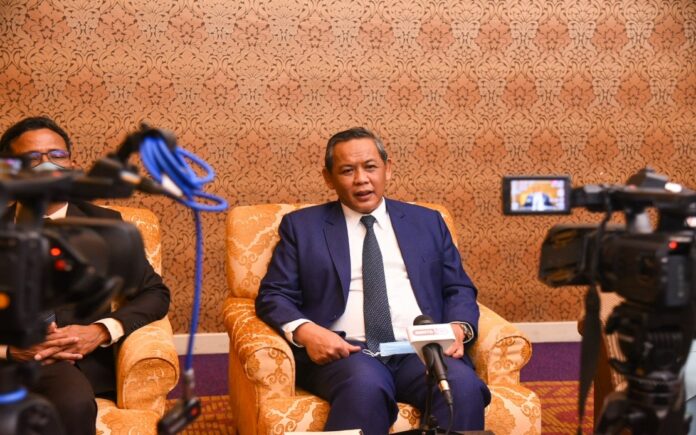LANGKAWI, Aug 30 — Negeri Sembilan became the first state in Malaysia to launch the publication of the Negeri Sembilan State and District Input-Output Table which pioneered the creation of territorial input-output tables in Malaysia.
Menteri Besar Datuk Seri Aminuddin Harun said the results of the analysis would be the basis for the preparation of a medium-term planning document, namely the Negeri Sembilan Development Plan (RPNS) 2021-2025, which would be launched in the near future.
“The analysis from the input-output table allows the focus economic sector to be identified and the impact of investment and development of a sector on the economy, social and environment can be evaluated holistically and inclusively.
“Therefore, it is proof of the state government’s commitment in transforming the economic planning method to empower and strengthen Negeri Sembilan’s economic fundamentals,” he told Bernama after officiating the 28th International Input-Output Association (IIOA) Conference here today.
The publication was the result of a collaboration between the Department of Statistics Malaysia and Centre for Future Labour Market Studies (EU-ERA).
Aminuddin said RPNS 2021-2025 document contained the policy direction of reform and transformation of Negeri Sembilan’s economy as well as acting as a complement to the Twelfth Malaysia Plan (12MP) at the national level.
It is formulated based on three main focuses which are economic sustainability, well-being and prosperity of the people and environmental sustainability.
“The three focuses are equipped with policy catalysts that serve as the basis to support the state’s development for the period from 2021 to 2025.
“RPNS 2021-2025 is a manifestation of the state government in realising the concept of Shared Prosperity, which is in line with the Sustainable Development Goals under the 2030 Agenda.
“RPNS 2021-2025 will bring Negeri Sembilan to a more competitive level in line with the development goals of a developed Negeri Sembilan in 2030 and a modern Negeri Sembilan in 2045,” he said.
Aminuddin said the development of the State and District Input-Output Table would help the state government to implement evidence-based policy.
“Therefore, more targeted and productive intervention can be carried out by taking into account the impact and potential of the economic sector thus helping to reduce the inefficiency of resource use in an effort to further increase Negeri Sembilan’s economic growth as a whole.
“This intervention can strengthen economic monitoring at the sectoral level through the response between supply and demand.
The 28th IIOA Conference, organised by IIOA, the Malaysian Input-Output Economics Association and EU-ERA, is taking place from Aug 28 to Sept 2, 2022 and is the first IIOA conference to be held in Malaysia and Southeast Asia.
















